-
 bitcoin
bitcoin $101752.865364 USD
-1.09% -
 ethereum
ethereum $3382.985899 USD
-1.38% -
 tether
tether $0.999658 USD
0.04% -
 xrp
xrp $2.272505 USD
-1.51% -
 bnb
bnb $989.089004 USD
0.14% -
 solana
solana $156.962612 USD
-3.08% -
 usd-coin
usd-coin $0.999776 USD
0.01% -
 tron
tron $0.290786 USD
-0.69% -
 dogecoin
dogecoin $0.174594 USD
-2.86% -
 cardano
cardano $0.560085 USD
-3.55% -
 hyperliquid
hyperliquid $40.023704 USD
-5.75% -
 chainlink
chainlink $15.324649 USD
-2.78% -
 bitcoin-cash
bitcoin-cash $493.576540 USD
-3.52% -
 zcash
zcash $571.320038 USD
-12.05% -
 stellar
stellar $0.280066 USD
-4.26%
Is it better to have a smooth OBV curve or a large fluctuation? What do different forms represent?
A smooth OBV curve suggests stable volume flow and trend continuation, while large OBV fluctuations indicate volatility and potential trading opportunities.
May 23, 2025 at 07:36 am
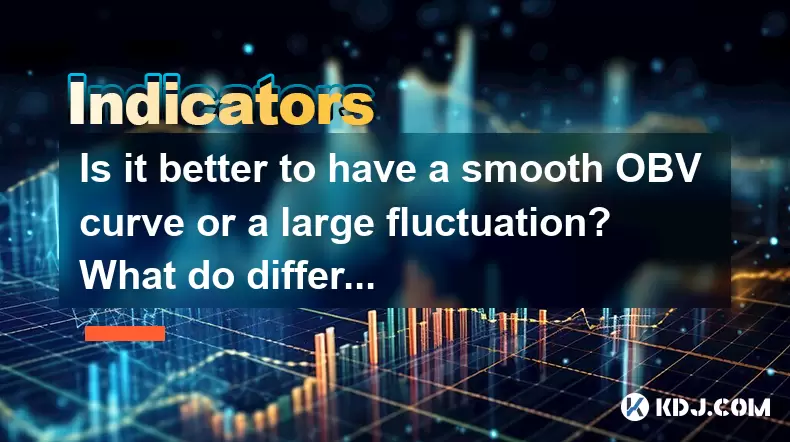
The On-Balance Volume (OBV) is a technical indicator used in cryptocurrency trading to measure buying and selling pressure. It helps traders understand the flow of volume in relation to price movements. When discussing whether a smooth OBV curve or a large fluctuation in OBV is better, it's essential to understand what each scenario represents and how they can be interpreted in trading strategies.
Understanding OBV
The OBV indicator works by adding volume on up days and subtracting volume on down days. The resulting line aims to show whether volume is flowing into or out of a cryptocurrency. A rising OBV suggests bullish pressure, while a falling OBV indicates bearish pressure. The shape of the OBV curve—whether smooth or with large fluctuations—can provide different insights into market conditions.
Smooth OBV Curve
A smooth OBV curve typically indicates a stable and consistent volume flow. This can be interpreted in several ways:
- Consistent Market Sentiment: A smooth OBV suggests that the market sentiment is relatively stable. Traders might see this as a sign that the current trend, whether bullish or bearish, is likely to continue without significant interruptions.
- Less Volatility: A smooth OBV curve often accompanies lower price volatility. This can be beneficial for traders who prefer a more predictable trading environment.
- Potential for Trend Continuation: If the OBV is smoothly trending upwards or downwards, it might indicate that the current trend has strong backing and is likely to persist.
Large Fluctuations in OBV
In contrast, large fluctuations in OBV indicate significant shifts in volume and potentially in market sentiment. These fluctuations can be interpreted as follows:
- Volatility and Uncertainty: Large swings in OBV can suggest that the market is experiencing high volatility. This might be due to news events, large trades, or shifts in investor sentiment.
- Potential Reversals: Sudden spikes or drops in OBV can signal potential trend reversals. Traders often look for these fluctuations as opportunities to enter or exit positions.
- Increased Trading Opportunities: For traders who thrive on volatility, large fluctuations in OBV can present more trading opportunities. These traders might use OBV to identify points of significant volume movement and trade accordingly.
Interpreting Different Forms of OBV
The shape of the OBV curve can take various forms, each providing different insights:
- Steady Ascent: A steadily rising OBV curve, even if smooth, suggests that buying pressure is consistently outpacing selling pressure. This can be a strong bullish signal.
- Steady Descent: Conversely, a steadily falling OBV curve indicates consistent selling pressure, which is a bearish signal.
- Sharp Spikes: Sharp spikes in OBV, whether upward or downward, suggest sudden shifts in volume. These can be due to significant news or large trades and might precede price movements.
- Divergence: When the OBV diverges from the price (e.g., price rises while OBV falls), it can signal a weakening trend and potential reversal.
Using OBV in Trading Strategies
Traders can use the OBV in various ways to enhance their trading strategies:
- Confirming Trends: A trader might use a smooth OBV curve to confirm a trend. If the price is rising and the OBV is also rising smoothly, it reinforces the bullish trend.
- Identifying Reversals: Large fluctuations in OBV can help identify potential reversals. For example, if the price is rising but the OBV suddenly drops sharply, it might signal that the bullish trend is losing steam.
- Volume Breakouts: Traders can look for OBV breakouts, where the OBV moves out of a range, to signal potential price breakouts.
Practical Example of Using OBV
Let's consider a practical example of how a trader might use OBV in their decision-making process:
- Scenario: A trader is monitoring Bitcoin (BTC) and notices that the price has been steadily increasing over the past week. The OBV curve has been rising smoothly alongside the price.
- Interpretation: The smooth rise in OBV suggests that the bullish trend is backed by consistent buying pressure. The trader decides to enter a long position, expecting the trend to continue.
- Scenario Change: A few days later, the trader notices a sudden sharp drop in the OBV, even though the price is still rising.
- Interpretation: This divergence between price and OBV suggests that the bullish trend might be weakening. The trader decides to exit the long position to avoid potential losses.
OBV and Other Indicators
While OBV can be a powerful tool on its own, combining it with other indicators can provide a more comprehensive view of market conditions:
- Moving Averages: Traders might use moving averages of the OBV to smooth out short-term fluctuations and focus on longer-term trends.
- Relative Strength Index (RSI): Combining OBV with RSI can help identify overbought or oversold conditions alongside volume trends.
- MACD: The Moving Average Convergence Divergence (MACD) can be used alongside OBV to confirm trend strength and potential reversals.
Conclusion on OBV Curve Types
Whether a smooth OBV curve or large fluctuations are better depends on the trader's strategy and risk tolerance. A smooth OBV curve can indicate a stable and potentially continuing trend, which might be preferred by traders looking for less volatility. On the other hand, large fluctuations in OBV can signal volatility and potential trading opportunities, which might appeal to traders who thrive on market swings.
Frequently Asked Questions
Q1: Can OBV be used for all cryptocurrencies?Yes, OBV can be applied to any cryptocurrency that has sufficient trading volume data. However, the effectiveness of OBV might vary depending on the liquidity and trading activity of the specific cryptocurrency.
Q2: How often should I check the OBV?The frequency of checking OBV depends on your trading style. Day traders might check OBV multiple times throughout the day, while swing traders might review it less frequently, such as daily or weekly.
Q3: Is OBV more useful for short-term or long-term trading?OBV can be useful for both short-term and long-term trading. For short-term trading, OBV can help identify immediate volume changes and potential price movements. For long-term trading, OBV can confirm trends and help traders stay in positions for extended periods.
Q4: Can OBV be used alone, or should it be combined with other indicators?While OBV can provide valuable insights on its own, it is often more effective when combined with other technical indicators. Using OBV in conjunction with indicators like moving averages, RSI, and MACD can provide a more comprehensive analysis of market conditions.
Disclaimer:info@kdj.com
The information provided is not trading advice. kdj.com does not assume any responsibility for any investments made based on the information provided in this article. Cryptocurrencies are highly volatile and it is highly recommended that you invest with caution after thorough research!
If you believe that the content used on this website infringes your copyright, please contact us immediately (info@kdj.com) and we will delete it promptly.
- Ripple (XRP) in 2026: Hold or Fold? A Look at XRP's Future and Emerging DeFi Alternatives
- 2025-11-08 18:35:01
- Zcash ZEC Coin Price Explosion: From Privacy Niche to Center Stage
- 2025-11-08 18:55:01
- Berachain Price Prediction: Navigating the Honeycomb Hype in Crypto
- 2025-11-08 18:55:01
- Arthur Hayes, Gold, and Bitcoin: A Modern Monetary Trinity?
- 2025-11-08 19:15:01
- Shiba Inu's Next Move: Navigating a Shifting Market
- 2025-11-08 19:20:01
- Pakistan's Crypto Crossroads: Balancing Opportunity with Asset-Backed Realities
- 2025-11-08 19:20:01
Related knowledge
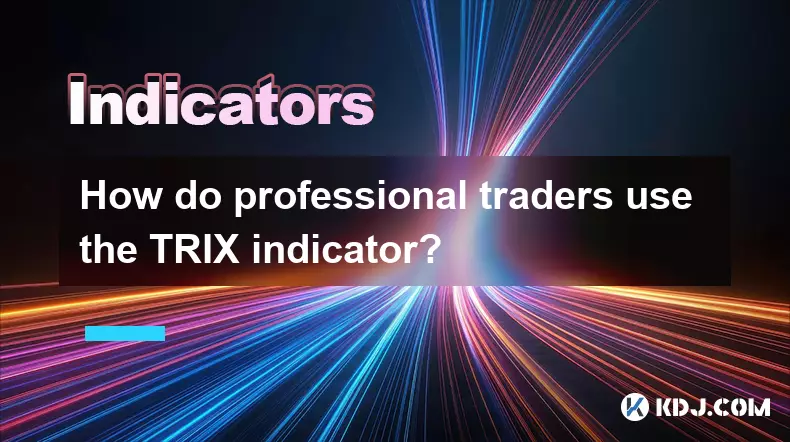
How do professional traders use the TRIX indicator?
Nov 06,2025 at 04:40pm
Understanding the TRIX Indicator in Crypto TradingThe TRIX (Triple Exponential Average) indicator is a momentum oscillator used by professional trader...
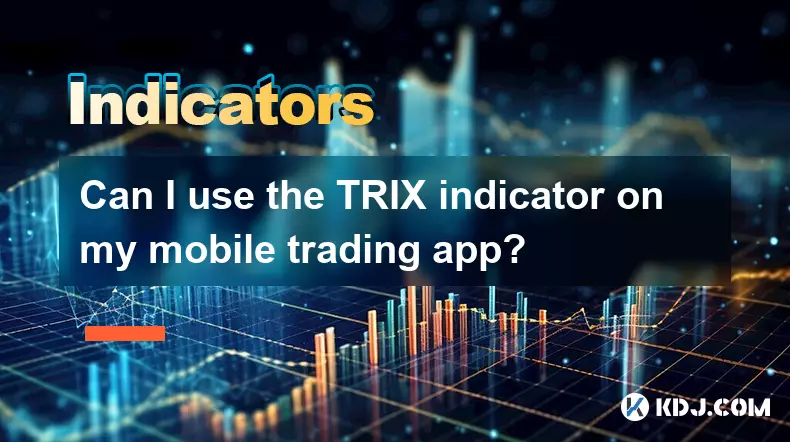
Can I use the TRIX indicator on my mobile trading app?
Nov 07,2025 at 07:40pm
The TRIX indicator, a momentum oscillator designed to filter out short-term fluctuations and highlight long-term trends, has become increasingly popul...
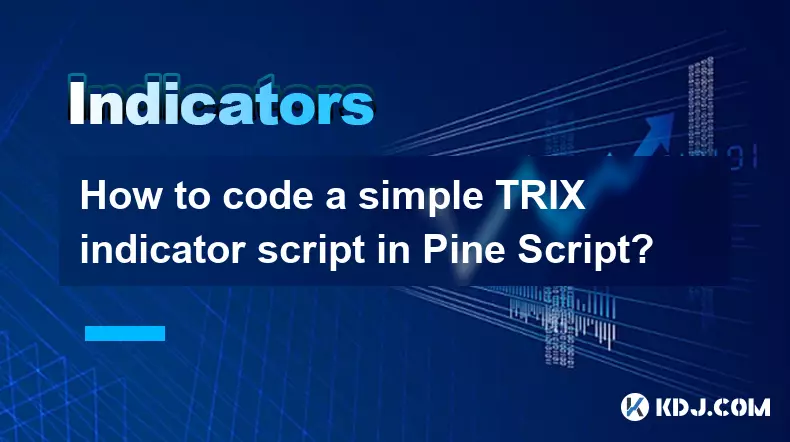
How to code a simple TRIX indicator script in Pine Script?
Nov 07,2025 at 06:20am
How to Code a Simple TRIX Indicator in Pine Script The TRIX (Triple Exponential Moving Average) indicator is widely used in cryptocurrency trading to ...
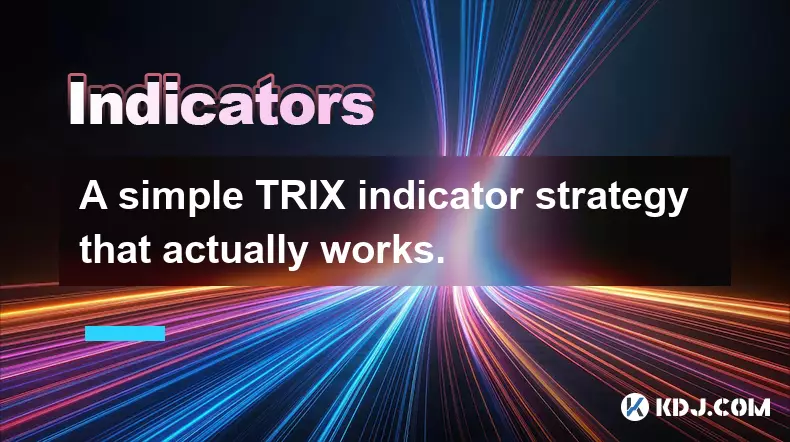
A simple TRIX indicator strategy that actually works.
Nov 08,2025 at 05:39pm
Understanding the TRIX Indicator in Crypto Trading1. The TRIX (Triple Exponential Average) indicator is a momentum oscillator designed to filter out s...
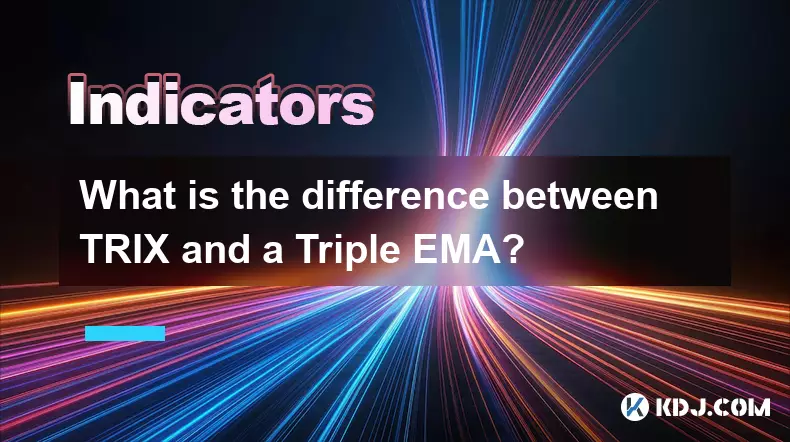
What is the difference between TRIX and a Triple EMA?
Nov 10,2025 at 04:00am
Understanding Decentralized Exchanges in the Crypto Ecosystem1. Decentralized exchanges (DEXs) have emerged as a cornerstone of blockchain innovation,...
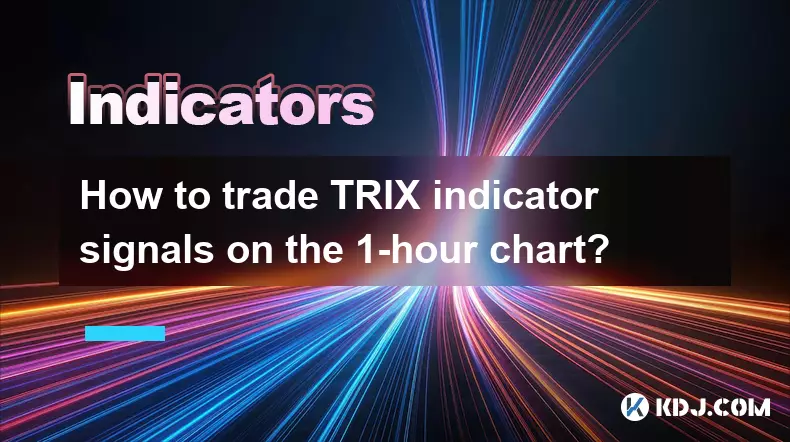
How to trade TRIX indicator signals on the 1-hour chart?
Nov 07,2025 at 05:39am
Bitcoin's Role in Decentralized Finance1. Bitcoin remains the cornerstone of decentralized finance, serving as a benchmark for value and security acro...

How do professional traders use the TRIX indicator?
Nov 06,2025 at 04:40pm
Understanding the TRIX Indicator in Crypto TradingThe TRIX (Triple Exponential Average) indicator is a momentum oscillator used by professional trader...

Can I use the TRIX indicator on my mobile trading app?
Nov 07,2025 at 07:40pm
The TRIX indicator, a momentum oscillator designed to filter out short-term fluctuations and highlight long-term trends, has become increasingly popul...

How to code a simple TRIX indicator script in Pine Script?
Nov 07,2025 at 06:20am
How to Code a Simple TRIX Indicator in Pine Script The TRIX (Triple Exponential Moving Average) indicator is widely used in cryptocurrency trading to ...

A simple TRIX indicator strategy that actually works.
Nov 08,2025 at 05:39pm
Understanding the TRIX Indicator in Crypto Trading1. The TRIX (Triple Exponential Average) indicator is a momentum oscillator designed to filter out s...

What is the difference between TRIX and a Triple EMA?
Nov 10,2025 at 04:00am
Understanding Decentralized Exchanges in the Crypto Ecosystem1. Decentralized exchanges (DEXs) have emerged as a cornerstone of blockchain innovation,...

How to trade TRIX indicator signals on the 1-hour chart?
Nov 07,2025 at 05:39am
Bitcoin's Role in Decentralized Finance1. Bitcoin remains the cornerstone of decentralized finance, serving as a benchmark for value and security acro...
See all articles





















![The Graph Price Prediction [GRT Crypto Price News Today] The Graph Price Prediction [GRT Crypto Price News Today]](/uploads/2025/11/07/cryptocurrencies-news/videos/690d4df44fe69_image_500_375.webp)




















































